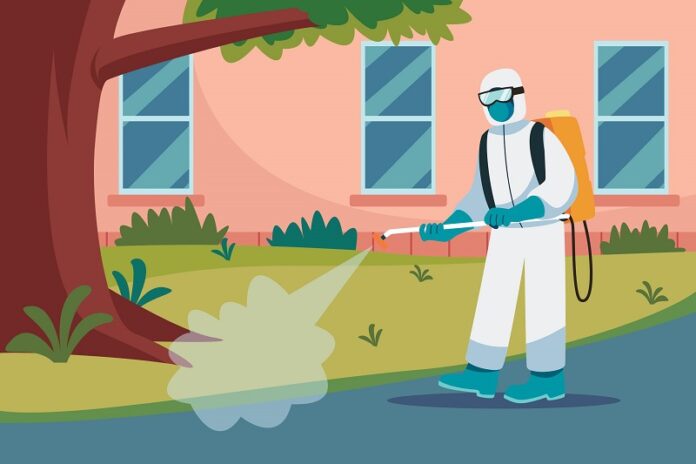
Mosquitoes have long been one of humanity’s deadliest foes. These tiny insects are responsible for the deaths of millions of people every year due to the devastating diseases they transmit, including malaria, dengue fever, yellow fever, Zika virus, chikungunya, West Nile virus, and more.
In recent decades, favorable conditions have allowed mosquitoes to proliferate and spread diseases at an alarming rate. Increased globalization, climate change, urbanization, population growth, deforestation, and inadequate sanitation have created a perfect storm for mosquito infestation.
This article takes an in-depth look at the current global mosquito infestation crisis. It analyzes the most significant drivers behind the surge in mosquito populations, the impact mosquito-borne diseases are having worldwide, innovative mosquito control and surveillance techniques, challenges facing eradication efforts, and the actions individuals and policymakers must take to address this growing threat.
What Factors Are Causing Mosquito Numbers to Surge?
Mosquitoes require standing water to breed. Any activity that increases stagnant water bodies, allows mosquitoes to infiltrate new habitats, or aids propagation is liable to boost Mosquito Infestation numbers. Here are the key factors behind the current mosquito population explosion:
Climate Change Expanding Mosquito Habitats
- Rising temperatures allow mosquitoes to thrive in previously inhospitable regions and altitudinal ranges.
- Increased rainfall and flooding provide new waterlogged breeding grounds like ponds and puddles.
- Longer warm seasons give mosquitoes longer reproductive periods and shorter incubation times.
- Extreme weather like storms and cyclones creates new inundated areas ideal for larvae.
Rapid and Unplanned Urbanization
- Unchecked urbanization has led to a proliferation of non-degradable plastics and tires that collect rainwater and enable mosquito breeding.
- Construction sites and urban infrastructure projects often create new mosquito habitats.
- Slums and informal settlements lack reliable piped water, necessitating storage in tanks and drums which can become infested.
Globalization Spreading Invasive Species
- Used tire trade and ship ballast water releases invasive mosquito species like Aedes albopictus into new continents.
- International travel, transport, and trade have spread aggressive disease vectors like Aedes aegypti across the world.
Deforestation and Ecosystem Destruction
- Clearing forests for mining, agriculture, and development removes native predators and displaces mosquitoes toward human settlements.
- Anthropogenic environmental damage and biodiversity loss facilitate irruptions of mosquito populations.
Poverty and Conflict
- People living in poverty cannot afford Mosquito Infestation deterrents like bed nets, screened housing, repellents, and pest control.
- Standing water accumulates in slums and temporary settlements of displaced people.
- Public health infrastructure is weak in underdeveloped and conflict-afflicted regions.
Agricultural Practices for Mosquito Infestation
- Irrigation and water storage for farming provide ideal mosquito habitats.
- The use of pesticides kills mosquito predators like dragonflies and spiders.
- Removal of livestock from land can lead to higher mosquito-biting rates on humans.
Inadequate Sanitation Systems
- Open drains, lack of piped water supply, and leaking pipes create stagnant water bodies that serve as mosquito hotspots.
- Temporary water storage aids mosquito breeding.
- Sewerage provides nutrient-rich water for larval development.
Population Growth and Movement
- Growing populations force people to live in proximity to mosquito breeding grounds.
- Refugee camps and human migration spread pathogens like malaria across regions.
- Higher population density leads to more human-mosquito contact.
The Global Health Impact of Mosquito Infestation Diseases
The massive amplification of global Mosquito Infestation populations has resulted in surging cases of devastating diseases that take a severe toll on human health and economies:
Malaria
- Caused by parasites of the genus Plasmodium spread by Anopheles mosquitoes.
- Over 200 million malaria cases and 400,000 deaths in 2019, mostly in African children.
- P. falciparum causes severe malaria with organ failure, coma, and death. Repeated infections lead to high morbidity.
- Drug and insecticide resistance threatens control efforts. No fully effective vaccine has yet been developed.
Dengue
- Caused by dengue virus spread by Aedes aegypti and Aedes albopictus.
- Over 100 million dengue infections every year, predominately in Asia and Latin America.
- Severe dengue can lead to plasma leakage, hemorrhage, organ impairment, and fatality.
- Successive infections increase disease severity due to antibody-dependent enhancement.
Chikungunya
- Caused by chikungunya virus transmitted by Aedes species mosquitoes.
- Symptoms include severe joint pain, rash, headache, nausea, fatigue, and fever.
- Pervasive polyarthralgia can last months to years after the initial infection.
- Major outbreaks in India and Latin America in recent years have affected millions.
Zika Virus
- Spread by Aedes mosquitoes, Zika can also be sexually and vertically transmitted.
- Usually mild illness in adults but can cause microcephaly, brain defects and Guillain-Barré syndrome.
- The 2015-16 epidemic in the Americas infected over 1 million and caused thousands of cases of congenital Zika syndrome.
Yellow Fever
- Caused by yellow fever virus spread by Aedes and Haemagogus Mosquito Infestation.
- Up to 50% mortality in severe cases due to hemorrhagic fever, jaundice, and shock.
- No treatment is available, only supportive care. Vaccination is critical for prevention.
- Resurgence in Africa has caused outbreaks in Nigeria, DRC, and Angola since 2016.
West Nile Virus
- Spread by Culex mosquitoes, West Nile generally causes mild illness.
- Can lead to West Nile neuroinvasive disease with encephalitis, paralysis, and death in the elderly.
- Became established in North America in 1999, causing seasonal epidemics and thousands of cases every year.
These examples illustrate the ability of mosquitoes to quickly spread dangerous pathogens far and wide once introduced to new areas. The health impacts on infected individuals and the strain on healthcare systems are immense.
Emerging Innovations in Mosquito Surveillance and Control – Mosquito Infestation
To combat the upsurge in mosquito infestations, researchers are exploring novel high-tech solutions for the detection and reduction of mosquito populations:
Real-time Tracking and Surveillance
- Apps allowing public participation in reporting Mosquito Infestation density and breeding sites.
- Remote sensing via satellites and drones to identify new Mosquito Infestation habitats and hotspots.
- Digital mapping of species distributions, outbreak probability, and transmission risk.
Genetic Biocontrol Methods
- Release of Wolbachia-infected or genetically modified sterile male mosquitoes to suppress populations.
- Gene editing to make female mosquitoes infertile or unable to host pathogens.
- Molecular biology advances facilitating precision targeting of species.
Automated Mosquito Infestation Traps
- Internet of Things (IoT) enabled smart traps that count, identify, and transmit data via mobile networks.
- Solar-powered fans and odor/visual baits to lure and catch mosquitoes.
- Improved selectivity to avoid capturing other insects.
Novel Larvicides
- Natural bacteria-derived proteins (Bti, Lysinibacillus sphaericus) target mosquito larvae but leave other animals unaffected.
- Insect growth regulators that disrupt mosquito development without broader ecological damage.
- Formulations that provide sustained release or target specific habitats like sewers.
Spatial Repellents
- Volatile pyrethroids, neonicotinoids, and botanicals that provide room-wide mosquito protection over months.
- Maximal exposure of mosquitoes to sublethal doses to minimize survival of resistant genes.
- Impregnated curtains, wall hangings, and emanator strips that drive mosquitoes outdoors.
Vaccine Development
- mRNA, subunit, and viral vector vaccines for malaria, Zika, and dengue progressing through clinical trials.
- Sterile immunity, transmission-blocking, and herd-immunity approaches are being explored.
- Antibody-based therapies to provide temporary protection during outbreaks.
These cutting-edge tools show immense promise for integrated Mosquito Infestation management programs aimed at disease mitigation if deployed wisely.
Challenges for Global Mosquito Control Efforts – Mosquito Infestation
While impactful biotechnological solutions are emerging, significant barriers stand in the way of eliminating mosquito scourges:
Logistical Difficulties
- Hard-to-access terrain, lack of roads, and remoteness of many affected areas impede control operations.
- Difficulty in adequately covering large areas during short optimal intervention periods.
- Prohibitive costs of aerial spraying, door-to-door campaigns, and community engagement.
Poverty and Poor Infrastructure
- Lack of piped water, sewer systems, and sealed housing leave developing regions vulnerable to infestation.
- Many at-risk populations cannot afford commercial insecticides and bed nets.
- Minimal spending on public health and weak healthcare systems in poor nations.
Environmental Concerns
- Overuse of pesticides and larvicides, like DDT previously, can harm ecosystems and aquifers.
- Releasing genetically modified mosquitoes has unknown ecological effects and faces public resistance.
- Destroying natural Mosquito Infestation predators upsets local biodiversity balance.
Illiteracy and Public Apathy
- Lack of awareness prevents communities from emptying stagnant water pooling in yards and rooftops.
- Politicians ignore Mosquito Infestation control given the lack of public pressure.
- Health education deficits inhibit the adoption of preventive measures.
Vector Control Challenges
- Mosquitoes develop resistance to commonly used insecticide classes like pyrethroids.
- Cryptic habitats like septic tanks and underground pits are difficult to locate and treat.
- Daytime biting species can evade bed nets and indoor residual spraying.
Pathogen Adaptation
- Malaria parasites alter surface proteins to escape immune system detection and antimalarials.
- Zika and dengue viruses undergo genetic changes causing unpredictable outbreaks.
- Lack of vaccines for many major mosquito-borne diseases.
Conflict and Migration
- Wars and political instability impede mosquito control efforts due to a lack of governance.
- Refugee camps enable mosquito and disease transmission between displaced people.
Overcoming these challenges requires multi-sectoral coordination and addressing deeper developmental issues like urban planning, healthcare access, education, sanitation, and economic inequality.
Recommended Steps for Citizens to Prevent Mosquito Infestation
Ordinary citizens can take impactful actions to help curb Mosquito Infestation breeding in their neighborhoods:
Drain or Treat Standing Water
- Empty all containers and rinse weekly to remove mosquito eggs and larvae.
- Cover tanks, wells, and ponds with tight screening.
- Apply larvicides like Bti to water that cannot be drained.
Seal Openings Around the Home
- Use tight-fitting screens on windows, chimneys, ventilators and doors.
- Seal gaps around air conditioners and fans where mosquitoes enter.
- Use screened porches.
Use Protective Measures
- When outdoors, apply EPA-registered mosquito repellents like DEET, picaridin or oil of lemon eucalyptus on exposed skin and clothing.
- Wear loose long sleeves and pants when outside, especially at dawn and dusk.
- Sleep under well-tucked mosquito nets at night. Treat netting with permethrin.
Cut Back Vegetation
- Clear excess vegetation and prune trees and bushes around the home to reduce resting sites for adult mosquitoes.
- Remove weedy plants and trim grass often.
Apply Pesticides Judiciously
- Use biorational larvicides like Bti and insect growth regulators in small contained water bodies and fountains.
- Consult experts to safely apply residual sprays, fogs, or misting on vegetation when necessary.
Support Community Mosquito Infestation Abatement Programs
- Allow district personnel to inspect the home and spray larvicides on the property when needed.
- Share Mosquito Infestation problems and report breeding hotspots.
- Follow APMD advisories and allow workers to release sterile or Wolbachia mosquitoes.
Preventing mosquito proliferation requires collective community vigilance. One negligent household can inadvertently spark an outbreak affecting the neighborhood.
Also Read: BEST HEALTH BLOG LIST FOR YOUR 2024
Policy Interventions and Partnerships Needed at All Levels
While personal action is important, ultimately mosquito infestation is a systemic problem requiring coordinated policy action on multiple fronts:
Improved Urban Planning and Housing
- Upgrade urban infrastructure to provide tapped water supply, underground drainage systems, and sewer lines.
- Enforce building codes requiring mosquito-proofing of housing construction.
- Provide subsidized housing to eliminate slums and informal settlements.
Access to Healthcare and Preventives
- Strengthen primary healthcare and diagnostic facilities in vulnerable regions.
- Ensure affordable access to vaccines, bed nets, repellents, and medications for at-risk populations.
Adequate Funding and Resource Allocation
- Increase national and international financing directed specifically at mosquito control operations and research.
- Dedicate more health ministry resources during peak seasons.
- Support innovative biotechnology firms developing novel tools.
Integrated Mosquito Surveillance and Management
- Set up real-time tracking, monitoring, and database systems leveraging new technologies like remote sensing.
- Develop integrated Mosquito Infestation management plans tailored to local ecologies and needs.
- Enhance capacity building and training in control program design and evaluation.
Cross-border Coordination
- Foster collaboration between regional disease control bodies to prevent spread between countries.
- Share entomological data, and conduct coordinated interventions across borders.
- Harmonize policies around new biotechnologies.
Interdisciplinary Research
- Promote interdepartmental participation spanning public health, infectious disease, microbiology, ecology, engineering, and social sciences.
- Evaluate the health, environmental, and social impacts of innovations through field studies.
Community Mobilization
- Engage local leaders and residents through outreach programs to encourage participation.
- Employ trusted channels like schools, religious centers, and radio to promote educational campaigns.
Climate Change Mitigation
- Cut greenhouse gas emissions to avoid further shifts in mosquito distribution.
- Prepare vulnerable regions for changes through close monitoring and preventive steps.
Defeating Mosquito Infestation scourges will require all sections of society to come together and make mosquito control a priority issue. We must act urgently before these pernicious insects and the deadly pathogens they carry wreak even more havoc.











